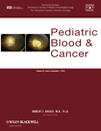Expanding options to improve outcomes following hematopoietic stem cell transplantation
Abstract
Allogeneic hematopoietic stem cell transplantation (HSCT) offers a curative option for children with a number of potentially lethal malignant and non-malignant conditions. Decisions regarding the appropriateness of HSCT for a given patient involve careful consideration of the risks associated with HSCT and the likelihood of cure. This is particularly important as the procedure is being used with increasing frequency for diagnoses such as high-risk sickle cell anemia where the disease is associated with shortened lifespan but death generally occurs in adulthood. Recent advances in supportive care such as improved anti-microbial agents, the use of reduced intensity conditioning regimens and high-resolution HLA typing that allows for better donor selection have all contributed to improved outcomes. However, the risk of treatment-related mortality remains approximately 5–10%, in part due to complications such as veno-occlusive disease (VOD) for which there has been less progress. Pediatr Blood Cancer. 2010;55:1043–1044. © 2010 Wiley-Liss, Inc.




